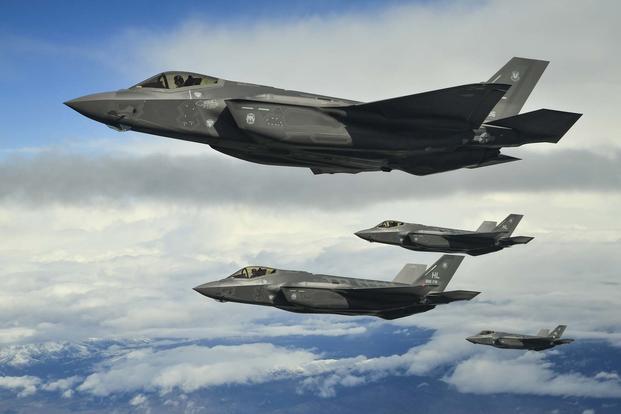The main problem in maintaining and upgrading the F-35 Joint Strike Fighter for the long term lies in the constant need to reprogram the millions of lines of code in the aircraft's software, according to the new acquisitions chief of the Air Force.
"Our big issue is software," said Will Roper, the Air Force undersecretary for Acquisitions, Technology and Logistics, adding that it wasn't a problem exclusive to the F-35. "Almost every software-intensive program is over budget and behind schedule."
Roper, who has been on the job for less than two months, told Pentagon reporters last week that "the physical pieces of the plane are moving in the right direction," but the software issues on the F-35 aren't.
"To me, it's a software program at this point," Roper said of the Lockheed Martin aircraft, the largest procurement program in Pentagon history with costs projected at upwards of $400 billion.
"The rest of acquisition can be improved, but it's the software -- we've got to up our game," he said. "A lot of the sustainment problems could be solved if we could do the software."
"Underpinning the F-35's unrivaled capabilities is more than eight million lines of software code -- more than four times the amount of the world's first 5th-generation fighter, the F-22 Raptor," Lockheed said in a press release. "From flight controls to fusing together the F-35's sensor data to form a clear and comprehensive picture of the battlespace, software is essential."
However, Roper said the Air Force and the Defense Department as a whole aren't currently adapted for the endless fixes and upgrades to the software that a 5th-generation fighter such as the F-35 requires.
The Pentagon is "not accustomed to having deliverables on a weekly or monthly basis," and the Air Force is not accustomed to agile software development in which "rapid drops happen all the time," Roper said.
"It's almost like if you solve this one thing, the dominoes would fall over and the world would be better," said Roper, who has a doctorate in mathematics from Oxford and formerly headed DoD's Strategic Capabilities Office.
Roper's focus was on the software, but recent reports and Congressional hearings have pointed to the mammoth costs of regular maintenance and spare parts for the F-35s and the difficulties of establishing separate supply chains for the three versions of the aircraft. The Air Force has the F-35A; the Navy has the F-35C, equipped with a tailhook for carrier landings; and the Marine Corps has the vertical-landing F-35B.
On Monday, Lockheed won a $1.4 billion contract to maintain F-35s for the U.S. military and international customers of the aircraft through next April.
Lockheed said the contract provided for "air system maintenance; pilot and maintainer training; depot activation; sustaining engineering; Automatic Logistics Information System (ALIS) support, data analytics and predictive health management; and supply chain logistics."
However, a Government Accountability Office report last week underlined the difficulties in maintaining F-35s when the services fail to share lessons learned in operations.
"Without the F-35 program office's sharing or making available operational lessons learned through a new or existing communications mechanism, the services are at risk of not having access to key information that could affect their movements, exercises, operations, and sustainment of the aircraft in the Pacific and other areas where they operate," the GAO report said.
The Marines' deployment of the F-35Bs to Iwakuni, Japan, has been plagued by shortages of spare parts, poor reliability of parts and lengthy repair times, the report said.
At a House Armed Services tactical air and land forces subcommittee hearing in March, several lawmakers expressed concerns at the ballooning maintenance costs for the F-35s under what the Pentagon calls "Continuous Capability Development and Delivery," or C2D2.
Rep. Niki Tsongas, D-Massachusetts., said costs "may be as high as $11 billion in development and $5.4 billion in procurement" for the F-35s between fiscal 2018 and fiscal 2024 to achieve all the requirements under C2D2.
"This potential cost of $16 billion is an astonishingly high amount, and, as far as I am aware, greatly exceeds any cost figures previously provided to Congress," she said. "It is important to remember this is a software-intensive effort, and the last 17 years of F-35 software development have seen dramatic cost increases and significant delays."
Vice Adm. Mat Winter, director of the F-35 Joint Program Office, said the current cost estimate stands at roughly $10.8 billion for development, of which $3.7 billion would be shared by U.S. allies operating the F-35. The Pentagon would thus be responsible for only $7.2 billion over seven years.
-- Richard Sisk can be reached at Richard.Sisk@Military.com.











